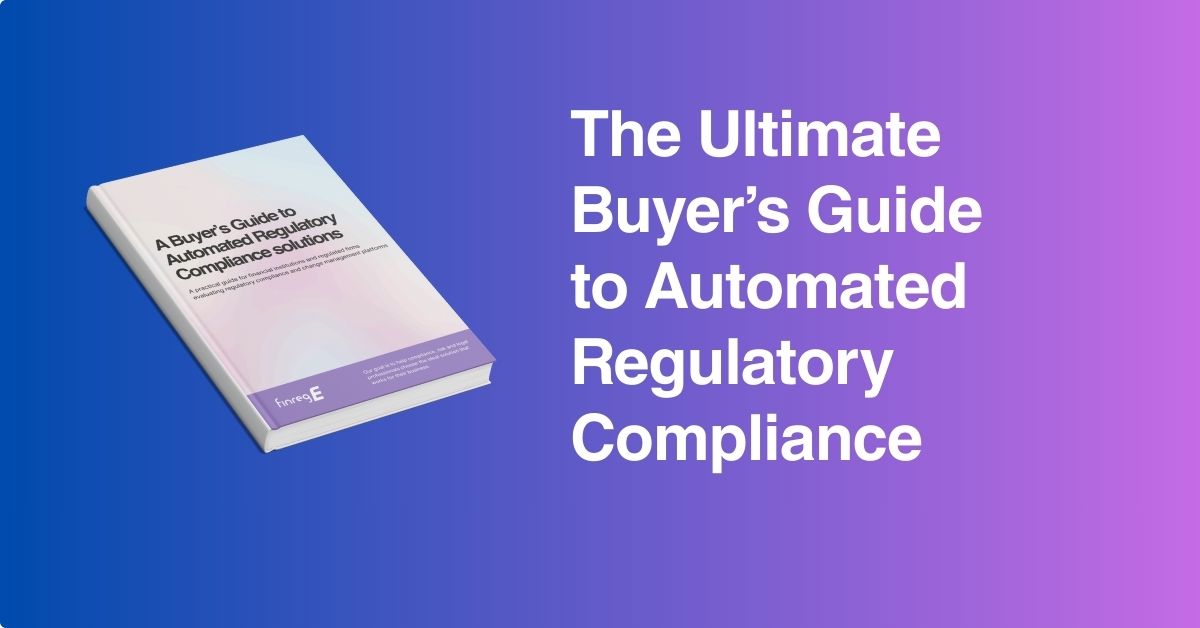On 8th June 2022, The UK Treasury released a statement stating that “critical third parties” serving financial institutions (FIs) will be subject to direct regulation by financial regulators. The announcement, which coincides with the proposals put forward in the EU’s Digital Operational Resilience Act (DORA), indicates that organisations serving FIs will be subject to the rulings of the Financial Conduct Authority, Prudential Regulation Authority, and the Bank of England.
The new ruling could affect how financial institutions interact with various third-party providers; however, determining how it changes operations, and how these changes should be implemented requires regulatory rule mapping or compliance mapping.
However, while compliance mapping is critical for staying in compliance with the latest updates, most organisations rely on dated compliance mapping procedures, leading to several problems down the line. In this blog, we explore why organisations should revamp their regulatory mapping procedures and what are the benefits of doing so.
The importance of improving compliance mapping
Regulatory mapping is a complex web of legal documentation, rule changes, and internal processes. Hence, it is daunting for most organisations dealing with multiple local, national, and international states, court decisions, and executive actions because they have to work through lengthy, complex documents to understand if a ruling applies to them and how.
Furthermore, the work of identifying these changes and understanding how it applies to an organisation remains mired in manual and siloed processes, which only drives up the cost of regulation and delays any meaningful actions. Critically, manual regulatory mapping processes often leave gaps in compliance. While internal professionals can understand the relevance of the law, they often misunderstand the intent, interpretation and implementation, which leads to several failures in operational risk management.
Hence, organisations need to repurpose their internal regulatory procedures using automated technology. Making this strategic move would allow organsiations to reduce internal compliance costs while also giving them a deeper understanding of the intent behind regulatory rulings and their ideal implementation, providing better insight into improving operational risk management.
What are the benefits of automating regulatory rule mapping?
Automating regulatory rule mapping can help organisations improve their regulatory compliance mapping process to cut costs while also making substantial improvements to risk management. Here are some reasons why automation can benefit FIs.
Improve efficiency and accuracy in rule mapping
Automated regulatory compliance solutions can process regulatory text faster than regulatory professionals. Using technology such as NLP, topic modelling, text analytics, and semantics analysis, the application can break down the regulatory text into specific obligations more efficiently and accurately without human intervention. Automated mapping can improve both the accuracy and efficiency of the process, which makes for better compliance and risk management.
Streamlining complex internal processes
Leveraging automated solutions for regulatory compliance mapping can help streamline regulatory procedures. Automated platforms can perform several critical procedures on behalf of the organisation. This includes capturing regulatory changes, understanding their impact, and connecting them to internal policies. Since much of the heavy lifting is done by automated solutions, organisations can streamline complex, time-consuming processes to make them more efficient and timely.
Freeing compliance teams from tedious work
Regulatory teams are often bogged down in complex, time-consuming procedures when executing compliance mapping. However, automated platforms can lift much of the heavy workload from professionals, saving them from tedious and duplicate processes. Moreover, regulatory professionals are free to focus on deepening their understanding of compliance updates, focusing on critical areas, such as the intent and implementation behind the update, leading to a significant improvement in risk management.
Reducing regulatory and reputational risk
Automating compliance mapping cascades into several benefits such as better risk management, lower compliance costs, and improved efficiency. All of these benefits lead to better regulatory management functions that reduce an organisation’s risk, which means a lower chance of a compliance violation. Preventing violations saves costs and builds up the company’s reputation for being reliable and trustworthy.
Building a seamless compliance mapping process
With the UK Treasury making significant changes to financial regulation, organisations have to look for ways to improve efficiency in compliance management. Hence, we can expect automation to play a more vital role in financial regulation. Automation is key to revamping compliance management, turning it into a more agile, efficient process where organisations can incorporate the latest updates into internal operations while also reducing compliance costs.
Regulatory rule mapping is one of many critical processes that benefit from automation. This is because making the rapid connection between external regulatory updates to internal operations can help financial institutions keep pace with the rapid change in regulation while reducing compliance costs.




